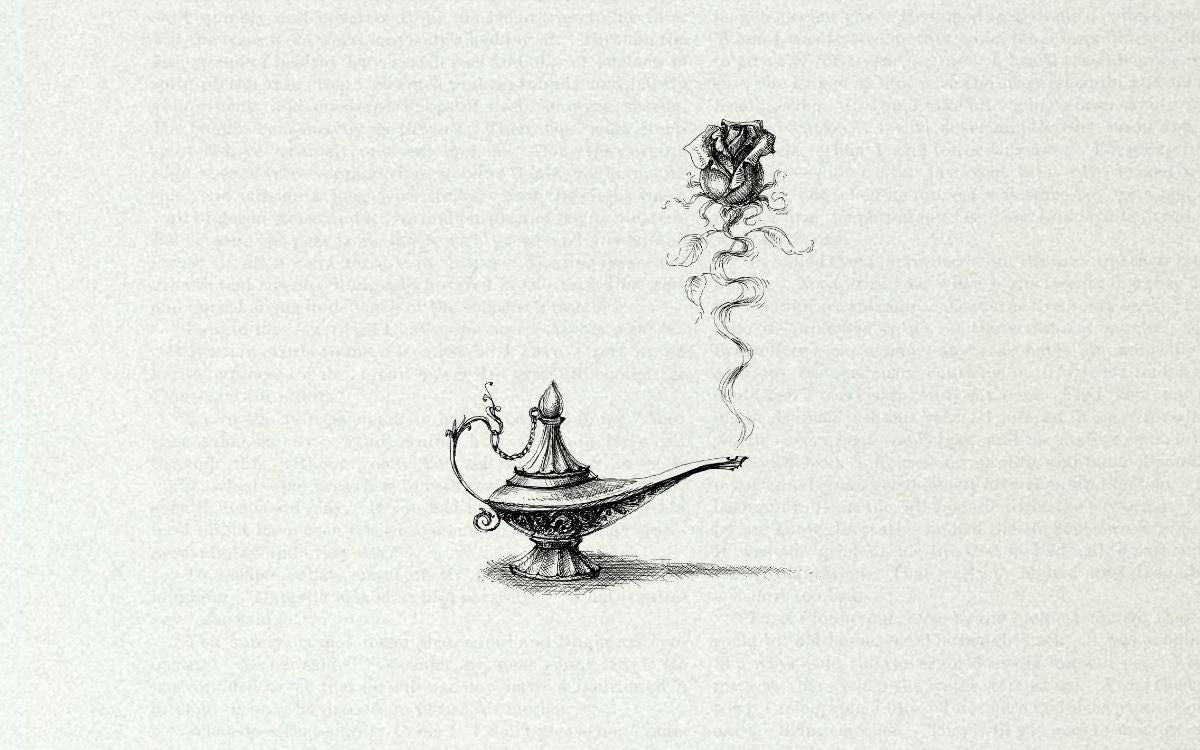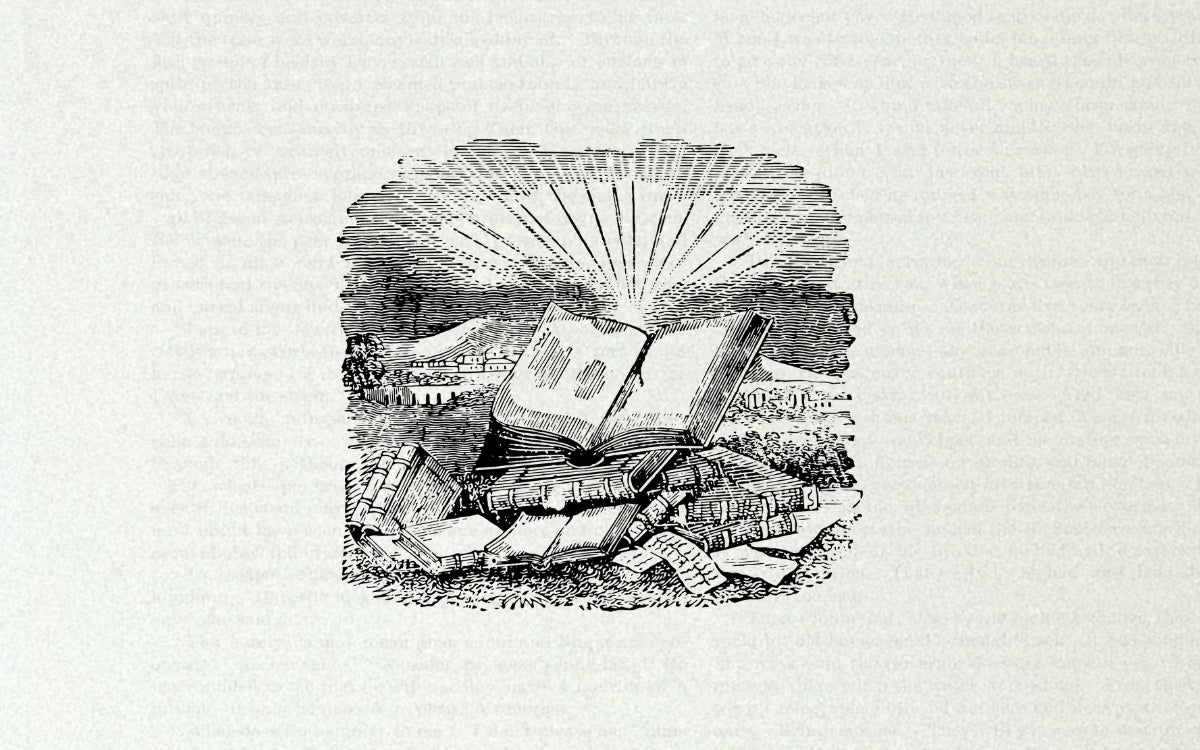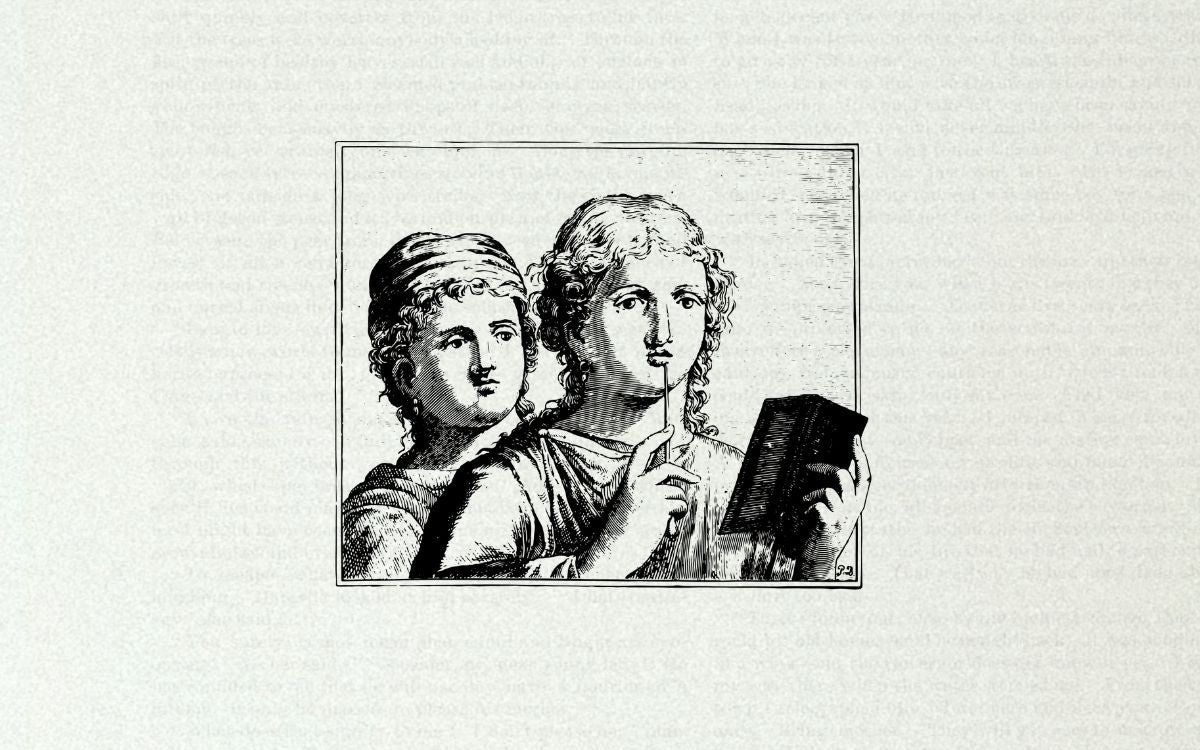“Make a delicious bowl of tea, lay the charcoal so that it heats the water; arrange the flowers as they are in the field; in summer suggest coolness; in winter, warmth; do everything ahead of time; prepare for rain; and give those with whom you find yourself every consideration.” --Soshitsu Sen
I’d never been into tea. Tasting like wilted flower soup at its best, and hot soil water with a slight bouquet of manure at its worst, I’ve been puzzled by its ancient, meditative, near mystical appeal. Maybe there was something I was missing? So while visiting Kyoto, I sought out what seemed to be one of the ultimate forms of its preparation: the Japanese tea ceremony — a ritual that can take up to four hours.
Though the ceremony I ended up attending wasn’t nearly that long, it helped me find something I didn’t even know I was looking for: an idea.
From beginning to end, the ceremony left nothing unaccounted for. Each tiny element was a critical part of a spell that allowed this ancient ritual to transform the simple act of pouring cups of hot flavored water, into an experience that felt...sacred. This ritual had the power to make the ordinary extraordinary. What if we could harness that power in our own lives?
In order to harness a force, we need to better understand its nature. So, what is a ritual? Stripped of its religious, spiritual, or cultural connotations, a ritual is simply a repeated sequence of behaviors. This definition is shared by another—perhaps more familiar— term: routine.
These terms are often used interchangeably because they have a lot in common. They’re both tools for directing our behavior, and deploy many of the same psychological tactics to help us develop that most critical yet elusive quality: consistency. Though routines and rituals share many of the same means, what is often lost, is that their ends are very different. Whereas the goal of a routine is to make a behavior automatic, the goal of a ritual is to make it intentional.
Routines are process-driven. They're sequences of actions often intended to turn good behaviors into habits. By definition, a habit is "an acquired behavior pattern regularly followed until it has become almost involuntary."
Most of the behaviors required by the habits we aspire to are far from voluntary. Be it diet, or exercise, or going to bed on time, we often resist doing what’s necessary because it doesn't come naturally. Habits are conceptually so enticing because they promise to make good behavior second nature. At first this sounds great: to automate our self-care so we don’t have to think about it anymore. But if the ultimate goal of forming a good habit is acting unconsciously, we should be concerned, because this also happens to be the defining characteristic of what we don’t want: bad habits.
Nail-biters, nose-pickers, open-mouthed-chewers, interrupters, close talkers, et al are often shocked when their behavior is brought to their attention. Do I really do that?! They do these things unconsciously, unaware of their own behavior. Though we're all guilty of behaving unseemly from time to time, it doesn’t have a large impact on our lives because it's a rare behavior out of our character. A behavior on its own is rarely a problem. It’s the mindless repetition of that behavior—the habit—that risks making it a problem. Having a drink is not a problem, having a drinking habit is a problem. Taking a painkiller is not a problem. Having a painkiller habit is a problem.
It’s telling that a critical part of the strategy for deprogramming automatic behavior—habit— is through intentional behavior. It’s about becoming mindful of our actions. When you’re trying not to drink, you go to places that won’t tempt you. When you’re trying to be productive, you systematically eliminate distractions. You take what was mindless, and make it mindful. This brings us to the fundamental flaw with the premise of adopting good habits: to take something mindful and make it mindless.
The potential damage caused by automating our behavior is clear when viewed through the lens of our vices, but it’s just as true for many of the virtuous habits we aspire to. Working is not a problem. Working all the time can ruin relationships. Running or lifting weights is not a problem. Doing them mindlessly can result in lasting injury. Arguably, most beneficial behaviors require more attention—not less—in order yield the desired and lasting results.
Taking care of ourselves requires a complex array of behaviors like planning, commuting, research in addition to diet and exercise. Health is also a continuum and sustaining physical fitness over time requires ongoing self awareness and ever-changing adjustments. With so many variables, it begs the question: is there a reality in which these good behaviors we aspire to can be truly automated? What is this fixation with automation anyway?
Part of the disconnect is that many of the habits we aspire to often require us to do things that aren't very inspiring. Drinking eight glasses of water a day? A rather dry pursuit. Lifting heavy things up and down over and over? Not very up-lifting. Going to bed earlier? Yawn. Standing between us and the extraordinary selves we wish to be, is our aversion to the ordinary.
Habits are compelling not only because they promise to make us better, but because they promise to automate the ordinary. If that is even possible, it surfaces another concern: these ordinary behaviors, the way we eat, the way we move, the way we sleep, compose much of the substance of our lives. By striving to make them ever more automated, the more mundane and uninteresting they become. In other words, true habit acquisition threatens to make our lives feel ever less meaningful.
Behavior change is hard because we’re swimming against the current of our own nature. Routines try to make it easier for us to keep fighting upstream by providing structure and direction. What they fail to give us is a reason why it matters.
Nietzsche once said “He who has a why to live, can bear almost any how.” In order to truly change our behavior, we have to believe in the reason why we’re changing. We need a compelling purpose that will motivate us to do what is necessary, which often boils down to simply doing ordinary things over and over and over again. Now we've arrived at the fundamental difference between habits and rituals. Whereas routine is a process-driven approach to behavior change, ritual is a purpose-driven approach. Routines focus on the what, rituals focus on the why.
Whereas the purpose of a routine becomes more mundane and obscure each time it’s performed, a ritual is a celebration of its purpose. While habits make the ordinary invisible, rituals make the ordinary extraordinary. They do this through the oldest mind altering trick in the book: storytelling.
Stories help us make sense of our world. Good stories have the power to educate us, inspire us, comfort us, even shape our very beliefs. When we think of stories, we think of books, and art, and movies. We don’t think of birthdays, funerals, weddings, graduations, baptisms, bar mitzvahs and other rites of passage, but these rituals are also stories. Rituals allow us to embody stories that can imbue even the most ordinary task or object with meaning.
Think about the rituals or ceremonies you’ve been a part of. No matter how holy, sacred, elegant or elaborate they were, each one still consisted of ordinary actions: cooking, cleaning, bathing, reading, talking, moving, eating, and even waiting. A ritual elevates mundane behaviors by integrating them into a meaningful narrative.
It’s at this point you may be wondering why compare rituals and habits at all. One seems designed to help you get abs, while the other to help you connect with a greater power. Granted, when we think of ritual, it may conjure religious, spiritual, or downright spooky images. Let's dispel those associations by defining a ritual for what it truly is: a repeated sequence of behaviors that serves a greater purpose. The only magical element about a ritual —the one often forgotten— is that we get to define what that purpose is. What if we created rituals whose purpose would be becoming better versions of ourselves?
Throughout history rituals have been used as a successful means of self transcendence. They provide a behavioral framework that allows us to connect with our beliefs using both our mind and our body. Because they’re based on ideas we believe in, they motivate us to put those ideas into action over and over again. That’s how things change. Repetition over time.
Rituals are a proven ancient technology that we can repurpose to cultivate the version of ourselves we want to be. All we have to do is define that vision of ourselves, and then we program a sequence of behaviors that support that vision.
Designing personal rituals is the intentional choreography of our actions with our beliefs. Each time we perform our ritual, we're actively inhabiting our better self. The more times we live that story, the more natural it becomes. The more we behave like the version of ourselves we want to be, the more we identify as them. You are what you do. As organizational psychologist Benjamin Hardy said “How you see yourself is highly fluid and based on your own behaviors. As your behavior changes, your perceived identity changes.”
In practice
Allow me to share a real life example of how this all comes together. The following was my last month's ritual. It integrates a lot of the concepts we explored here. I share this example not to recommend this ritual, but to provide a model for considerations that may help when designing your own rituals. A personal ritual needs to be a reflection of what is meaningful to you. If it reflects someone else's purpose, it’s likely to feel meaningless.
Designing a ritual can be done in three steps.
- Define the purpose of your ritual that you believe in.
- Define the behaviors (rites) that can cultivate that purpose and why they matter.
- Define the specifics of those behaviors (when, where, what, and why).
The Morning Ritual
When: 7:15 - 8:45am
Why: To better show up for those I love and serve. The why is the most important element throughout. Each rite is structured not as a goal, but as an intention: a commitment to a process. In this case the process is showing up as well as I can.
Rite: Turn on heat
Why: My partner is always cold, and this shows her that I care.
Rite: Put on coffee (5 mins)
Why: I don't drink coffee, but she does. I make the coffee to connect with my partner before I go to work. It takes a while to brew, which gives me time to…
Rite: Yoga (25-30 mins)
Why: I work out not for my body, but for my mind. When I don't work out, I’m distracted. Movement is therapy, and yoga is movement. I didn't even like yoga, it just happens to check a lot of boxes. It's sustainable daily, and is the minimum amount of exercise that clears my mind. What also made it more meaningful and enjoyable was incorporating the following:
Yoga Mat: It was a gift, and each time I unroll it reminds me that I'm loved. When I unroll the mat, it sets the stage. When I step onto the mat I remind myself why I'm doing this.
Music: I play a specific playlist. Sound creates both an environment and a boundary for me. When the music starts, it shifts my state.
Incense: I burn it in a kintsugi burner a friend made for me. It reminds me that I don't have to show up perfect. It's the showing up that matters. The incense itself functions as a visual timer as it burns for roughly 30 minutes. The smoke and the exotic scent fortify the sensual boundary that makes this time and space feel meaningful.
Rite: Meditation (10-15min)
Why: Firstly, to practice accepting the discomfort of doing nothing. Secondly, it's a daily reminder that we're not our thoughts or our feelings. Rather than get rid of my thoughts, meditation helps me create a little distance between me and my thoughts. In that space, I can become aware of my thoughts, which allows me to go from a reactive state, to a responsive one; to show up better.
Rite: Reset (5-10 mins)
Why: When I roll up the mat, I thank my past self for getting me here, and acknowledge their effort. It helps me cultivate gratitude towards the person who helped me show up today. To pay it forward, I clean up the place for my future self so they can work in a clutter free environment. I know that's important to them. It's a small virtuous cycle that allows me to experience the value of treating myself like a friend.
Rite: Bullet Journal - Morning reflection (5-15mins)
Why: To declutter my mind and clarify my thoughts. Chances are that by this point in the day, many thoughts or ideas will have bubbled up. I take this time to jot them down and set my priority for the day.
Rite: Shower
Why: This is the transition rite. The day so far has been dedicated to my inner world. Now it's time to focus on the world around me. A simple way to prepare, is to just show up clean. Hygiene demonstrates respect not just for others, but for yourself.
Rite: Nightly Prep (5-mins)
Why: Before I go to bed, I lay out my clothes and accessories that I will need for the morning, so there is even less friction to get on the mat. Once I'm in my workout clothes, I might as well just do it.
There is one final part of this personal ritual that takes place separately: the Monthly Reflection. Though traditional rituals tend to be fixed, personal rituals must change, because we change. Once a month I review and iterate on my rituals, adding, adjusting, and removing rites based on both my current circumstances and what I learned along the way. My personal ritual provides an evolving support structure to help me cultivate ongoing intentional change.
We all have great creative and destructive potential. We realize our potential through our behavior. The deciding factor between which potential we realize is how aware we are of *why* we're doing *what* we're doing.
Awareness without action amounts to little. There is a profound difference between knowing you should quit smoking, and not smoking, between wanting to eat better, and eating better, between planning to help, and helping.
Action lacking awareness—habit—puts us at risk of self-destructive behavior, wasting time pursuing things that are not sustainable, and automating things into meaninglessness. You lose 20lbs on a strict 60-day diet, only to return to your eating habits on day 61. You go from running zero miles a day to running five, only to injure yourself and spend the next two months limping laps from the couch to the fridge.
Ritual provides a way to put awareness into action. It allows us to take an active role in shaping a narrative we believe in. The more we believe in the things we are doing, the more likely we are to keep doing things we believe in, even when that involves doing ordinary things. This purpose-driven approach to behavior change has the power to keep reconnecting us with the ideas that make our lives feel meaningful.
It's this ability to make the ordinary feel extraordinary that makes ritual such a powerful tool for behavior change. After all, it's not that we want to change the way we behave, we want to change the way that we feel. We change our behavior to feel strong, calm, attractive, energetic, healthy, powerful, skillful, respectable, significant, belonging, and loved.
In the end, it's not about the tea. It's about the way the story of the tea makes us feel. Rituals don't have the power to transform the tea, but they do have the power to transform the ones drinking it. They grant us the ability to tell stories that reveal the extraordinary in every ordinary thing, and maybe, with practice, even ourselves.
Sources:
- The Psychology of Rituals: An Integrative Review and Process-Based Framework
- https://www.scientificamerican.com/article/why-Rituals-work/
- https://betterhumans.pub/how-to-design-3-personal-rituals-for-grounding-letting-go-and-recalibrating-c9d6d4236441
- https://martabrzosko.medium.com/to-reach-your-goals-in-2020-combine-habits-and-[[Ritual]]s-563367361256
- https://www.vox.com/conversations/2016/10/6/13172608/alain-de-botton-science-religion-god-atheism-richard-dawkins-christianity
- https://psychology.wikia.org/wiki/Ritual






